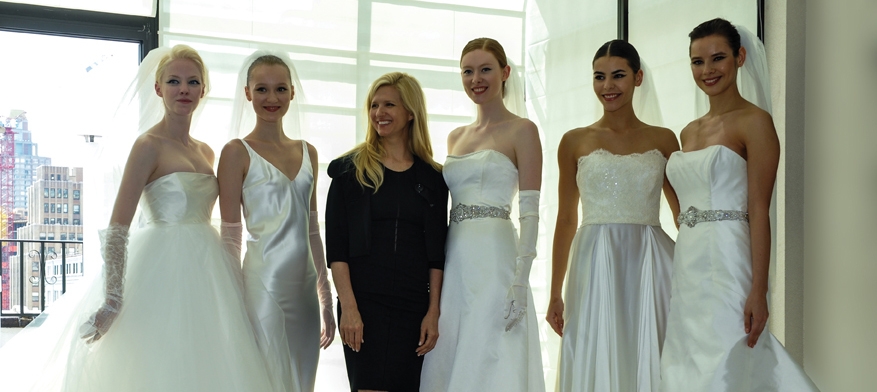I have had the good fortune in my career to have had my work featured in some of the most prominent magazines around the world. My dresses have also been in some of the finest retail stores. Still, after all this time in the industry, I am still in awe over the magical process of creating a couture dress and admire the talents and commitment of fellow designers. I have examined other designers’ gowns and often I know the creators of my competitors’ dresses. I appreciate the beauty in what I and others do.
What is often celebrated in this industry is the way in which designers share with each other. I have a friend who makes patterns for Vera Wang in New York and we talk intimately about particular dresses. She described one creation that had over a hundred different pattern pieces, and some of them were so small that they had to be kept in tiny Ziploc bags. Another patternmaker lamented that, prior to New York fashion week, her upper arms and back ached because of the amount of draping and sculpting fabric on the dress form she had to perform during her sixteen-hour days.
There is a shared understanding in these experiences. We’ve all had them. I have had to cut into lace that costs $1000 per metre — and that is at wholesale price. It is entirely nerve-wracking. Another of my dresses used over a hundred metres of silk. Yet another dress needed close to one hundred different components. It can be painstakingly detailed. However, it is all worth it.
Sometimes, I study one particular dress of another designer, perhaps a ready-to-wear piece, dissecting every part of it and eventually discussing its structure and cut with its creators/patternmakers. I want to know what is inside and how it was constructed. Gladly, they share these details with me, not because I am gleaning some industry secret, but primarily because I find joy in their execution of the garment. I share in their triumph of making an architectural impossibility happen despite gravity and the nuances of a woman’s body.
Another friend has an intimate atelier in New York where he and his wife work on bringing the most magnificent ideas to the runway through a roster of famous labels. I always marvel at the details. One piece was a seamless mesh pull-over shirt consisting only of glass cut beads that had to be created with a makeshift “loom” of hundreds of needles strategically hand weaving in and out of the beads. It is one thing to have great taste as a designer, but it’s another thing to execute these great ideas. This beaded shirt was a masterpiece that ended up in Sports Illustrated over a swimsuit.
High-level fashion editors innately recognize and understand these masterpieces. This is why so often the garments that are chosen for content are judged as weird or ugly by people who don’t understand. One example that comes to mind is the Vogue editorial of Alexander McQueen’s knitted gown circa 2003. The dress begins at the shoulders where the knitted stitches are sheer and small, resembling a transparent t-shirt – a t-shirt gown. The knitting needles and stitches become bigger as the dress gets closer to the hem and by the time the dress touches the floor, the oversized knitted stitches resemble rolling hills as the dress cascades into a voluminous train. There is genius in that someone was assigned to figure out the stitches per square inch and gauge them with the incremental change of growth according to the yarn and needle size. Then the knitters were cognizant and changed up their knitting size, all the while keeping each stitch in place as they worked.
Fashion is my art, and while it can be debated that it is a commercial craft, I still admire and look in wonder at the thousands of Swarovksi crystals, intricate embroidery, ostrich feather tendrils and fresh water pearls that “magically” appear on a gown. Somebody has to work tirelessly on making it all happen.
Because of my appreciation of intricacies, my dresses use old world materials coupled with new technical abilities. I use silk linings, lots of boning, stiff canvas and French lace. Special zippers, ribbon and the perfect nettings and tulles need to be carefully chosen. Fabric selections need to be carefully scrutinized as layers of various fabrics create new and different colours. The attention to detail and little extras make the difference.
The pattern of a couture dress is created specifically for the shape of the woman. The creator appreciates the woman’s body in its current state with no need to change her size. The dress revolves around the woman rather than a dress form. In contrast, with ordinary ready-to-wear, the woman usually has to modify her body somehow for the dress.
Valentino once stated that he needs his couture business for him to be continuously inspired to create all of the other pieces within his ready-to-wear and licensed collections. I completely agree. I am passionate about the anatomy of a couture dress. Getting to know my clients so I can truly create something perfect, just for them is, plain and simply, pure magic.

